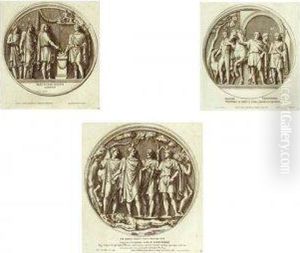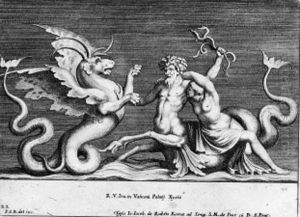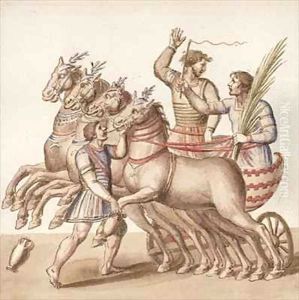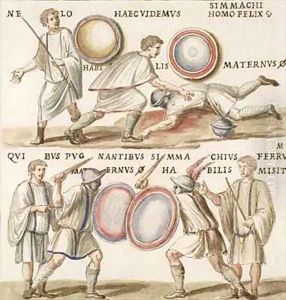Pietro Santi Bartoli Paintings
Pietro Santi Bartoli was an Italian engraver, draughtsman, and painter, noted for his works documenting the antiquities of Rome. Born in Perugia in 1635, Bartoli showed an affinity for the arts at a young age. He moved to Rome to further his studies and pursue a career in art, which was a thriving center for the arts during the 17th century.
In Rome, Bartoli became a pupil of the French artist Nicolas Poussin, who was a major figure in the classical French Baroque style. Under Poussin’s guidance, he developed his skills in drawing and engraving, ultimately forging a path for himself as a printmaker. Bartoli's work was distinguished by his meticulous attention to detail and his dedication to recording ancient Roman art and architecture.
Bartoli is best known for his engravings that depict the ancient monuments of Rome. His works served as an important record of many classical sculptures and frescoes, some of which have since been lost or damaged. This was an era when the study of antiquities was becoming increasingly popular in Europe, and Bartoli’s work provided scholars and artists with a reliable visual resource. His collections of prints were published in several volumes, which were widely disseminated and influential in spreading the knowledge of Roman antiquities throughout Europe.
Besides his documentation of ancient art, Bartoli also took an interest in contemporary art and was involved in the production of engravings after the work of leading artists of his time. He was an active participant in the vibrant artistic community of Rome and contributed to the preservation of both ancient and modern art through his engravings.
Pietro Santi Bartoli passed away in 1700, leaving behind a legacy as a meticulous recorder of the art and architecture of a bygone era. His works continue to be of great value not only to art historians but also to archaeologists and scholars interested in the cultural heritage of Rome. His dedication to preserving the past has ensured that subsequent generations have access to visual representations of many artifacts that would have otherwise been forgotten.

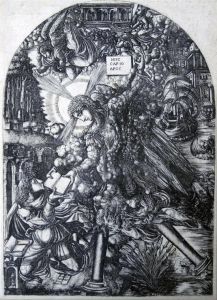
![Sante .- Monocromata, In Constantiniana Vaticani Aula [...]](https://www.niceartgallery.com/imgs/390945/s/pietro-santi-bartoli-sante-monocromata-in-constantiniana-vaticani-aula--b11e0396.jpg)


